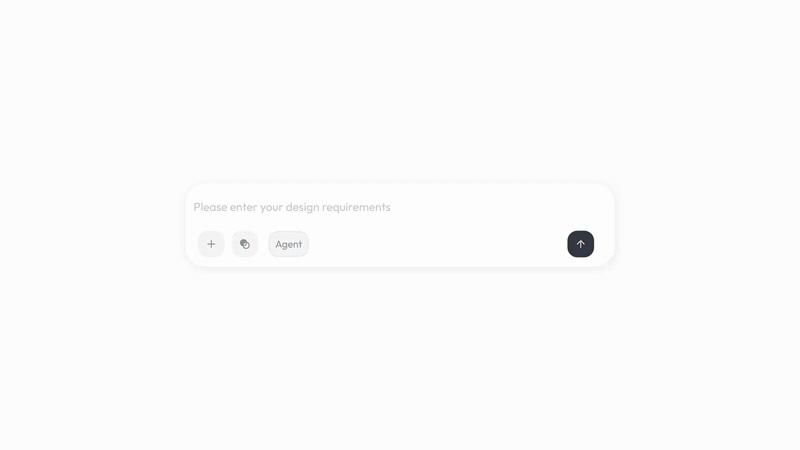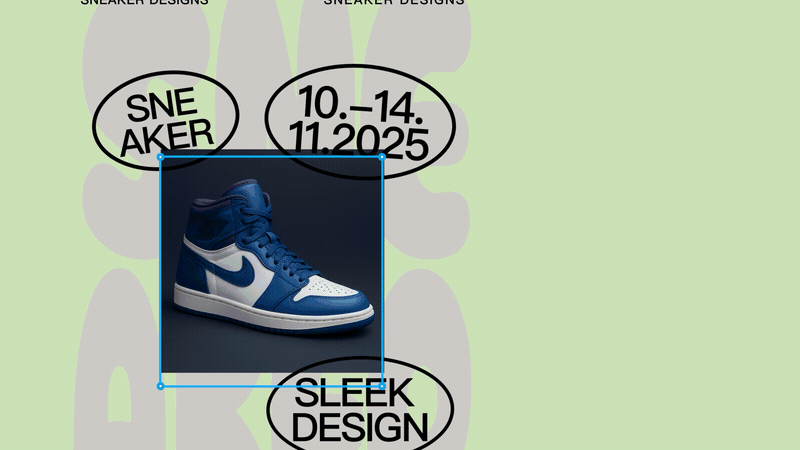What is the Best Al Design Agent?Complete Guide for 2025

An AI design agent is a smart digital assistant that helps people create, edit, and manage visual projects using artificial intelligence. Lovart AI Design Agent changes how designers, marketers, and creators work by blending human ideas with AI on one easy-to-use canvas. Many businesses now see major gains, such as a 55% boost in marketing efficiency and a 30% increase in business growth with AI tools.
Key Takeaways
- AI design agents are smart digital assistants that help create and manage visual projects quickly and easily using artificial intelligence.
- Lovart’s AI design agent acts as a creative partner, blending human ideas with AI to deliver professional designs without needing advanced skills.
- These agents work autonomously, understand natural language, and support teamwork by handling complex tasks and multiple projects at once.
- Using AI design agents boosts productivity, improves marketing efficiency, and helps businesses grow by saving time and reducing costs.
- To get the best results, teams should set clear goals, use quality data, monitor AI outputs, and protect data privacy throughout the process.
AI Design Agent Overview
Definition
An ai design agent is a digital assistant that uses artificial intelligence to help people create and manage visual projects. In the industry, experts describe these agents as systems with different levels of autonomy. Some agents only follow simple instructions, while others make decisions and learn from each project. This range is called "agentic" behavior. Lovart defines its ai design agent as a creative partner. It works alongside users, blending human ideas with AI to deliver professional results. Unlike tools that only generate images, Lovart focuses on building complete design systems. It supports unified workflows and makes design accessible to everyone, even those without technical skills. Industry leaders recognize Lovart for its ability to keep designs consistent and enable teamwork, making it a next-generation solution.

Key Features
Many ai design agents share important features that set them apart from regular software. These include:
- Autonomy: The agent can make decisions and carry out tasks without constant human input. For example, it can adjust layouts or suggest color changes on its own.
- Creativity: The agent helps brainstorm ideas, generate new visuals, and combine styles in unique ways. It acts as a creative partner, not just a tool.
- Integration: The agent works with other design tools and supports different file types. Lovart offers a unified canvas where users can edit, generate, and refine designs in one place.
- Natural Language Interaction: Users can talk to the agent using everyday language. This makes the design process faster and easier.
- Scalability: The agent can handle many projects at once and produce multiple deliverables from a single prompt.
Other companies show similar features. For example, some agents let users build custom workflows with simple visual tools. Others use multiple AI models that work together to solve complex problems. These systems can plan trips, manage finances, or organize schedules without needing step-by-step instructions. The best agents also learn from feedback and adapt to new needs over time.
How It Differs
AI design agents stand out from traditional design tools and chatbots in several ways. Traditional software follows fixed rules and needs users to do most of the work. It cannot learn or change on its own. Chatbots answer simple questions but cannot handle complex tasks or remember past conversations. In contrast, ai design agents use advanced AI to understand context, remember user preferences, and make decisions. They can manage entire projects, break tasks into smaller steps, and adapt as needs change.
AI design agents act as proactive partners. They do not just respond to commands—they plan, create, and improve designs over time.
The table below shows key differences:
FeatureTraditional ChatbotAI AgentTechnologyRule-basedAI-powered, neural networksAdaptabilityLowHighContext HandlingSingle-turnMulti-turn, context-awareLearning AbilityNoneLearns from interactionsUse Case ComplexitySimpleComplex, multi-stepTask AutonomyNonePlans and executes tasksPersonalizationLimitedDynamic, user-adaptiveMemory/State RetentionSession-basedLong-term memoryMulti-ModalityText onlyText, voice, vision, more
Lovart’s ai design agent goes beyond simple automation. It acts as a full creative team, supporting everything from brainstorming to final artwork. It can generate brand identities, packaging, and even videos, all from a single prompt. This level of autonomy and creative integration sets it apart from both traditional tools and basic chatbots.
Lovart AI Design Agent uses a simple but powerful approach called "Talk.Tab.Tune." This process makes designing easy for everyone.
- Talk: Users describe their design ideas or needs using everyday language. The agent listens and understands what the user wants.
- Tab: Users can click on any part of the design and type in changes. The agent responds by adjusting size, color, font, or layout right away.
- Tune: The agent fine-tunes the design based on feedback. It can suggest improvements, generate new versions, or make quick edits.
This workflow lets users move from idea to finished design without switching between different tools. The agent acts like a creative director, guiding the process and handling repetitive tasks. Users can create posters, packaging, branding, and more—all from a single prompt.
Lovart saves time and boosts creativity. Users get production-ready designs faster and with less effort.
Types & Uses
Main Types
AI design agents come in several main types. Each type serves a different purpose and helps users in unique ways.
- Generative Agents: These agents create new designs, images, or layouts from scratch. They use advanced AI models to turn ideas into visuals.
- Assistive Agents: These agents help users by suggesting edits, fixing errors, or automating simple tasks. They make the design process smoother and faster.
- Collaborative Agents: These agents work with teams. They share information, manage feedback, and help groups create together.
Some companies use multi-agent systems to boost efficiency. For example, manufacturing firms report a 30% increase in operational efficiency when using these systems. Collaborative agents also improve demand forecasting accuracy by 40%, according to IBM Watson.
AI Agent TypeUse CasesStatistical ImpactMulti-Agent SystemsTrading bots, production lines, supply chains30% increase in operational efficiencyCollaborative AgentsLogistics, traffic control, medical data sharing40% better demand forecasting accuracy
Applications
AI design agents support many creative tasks. They help with branding, packaging, poster design, and more. In marketing, these agents automate content creation, keyword research, and competitor analysis. Companies like Netflix and Nike use AI to personalize content and boost sales. In education, AI tailors lesson plans to each student, leading to better learning outcomes.

Application AreaImpact/Benefit SummaryMarketing Content CreationFaster production, cost efficiency, increased ROIPersonalized RecommendationsHigher sales, customer satisfaction, and engagementQuality ControlImproved product quality, reduced wasteEducationImproved learning outcomes through adaptive education
Lovart in Action
Lovart AI Design Agent transforms creative workflows for many users. For example, a design studio used Lovart to create a new brand identity and packaging for a beverage launch. The team described their vision in natural language. Lovart generated logo options, packaging visuals, and social media graphics in minutes. The studio finished the project 60% faster than before and reported higher client satisfaction.
Lovart helps users move from idea to finished design quickly. Teams can brainstorm, edit, and finalize projects on a single platform.
Benefits & Challenges
Benefits
AI design agents bring many advantages to creative teams and businesses. They help people work faster and smarter. Many industries now use these agents to improve their daily tasks. For example, healthcare, finance, and retail all report better results with AI. Hospitals in the EU use AI agents for disease diagnosis, and banks see a 25% drop in fraud. Retailers use AI to handle customer questions and manage inventory. These improvements lead to higher productivity, better customer service, and cost savings.
AI design agents also help teams scale their work. They can handle many projects at once and create new ideas quickly. Many business leaders believe AI frees workers to focus on important tasks. Employees say AI improves their work-life balance and job satisfaction.
Teams should remember that AI design agents need good data and careful setup to work well.
AI design agents help people create and manage designs with speed and accuracy. Lovart stands out as a top choice for creators who want to boost productivity and teamwork. Research shows that new advances in safety, efficiency, and collaboration will make these agents even more useful. Experts predict that AI could add trillions of dollars in value each year.

Share Article
